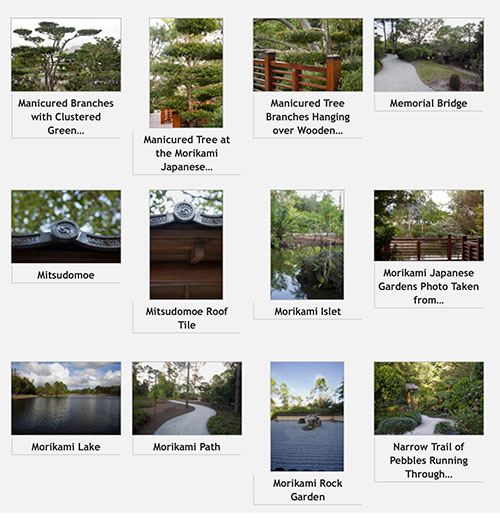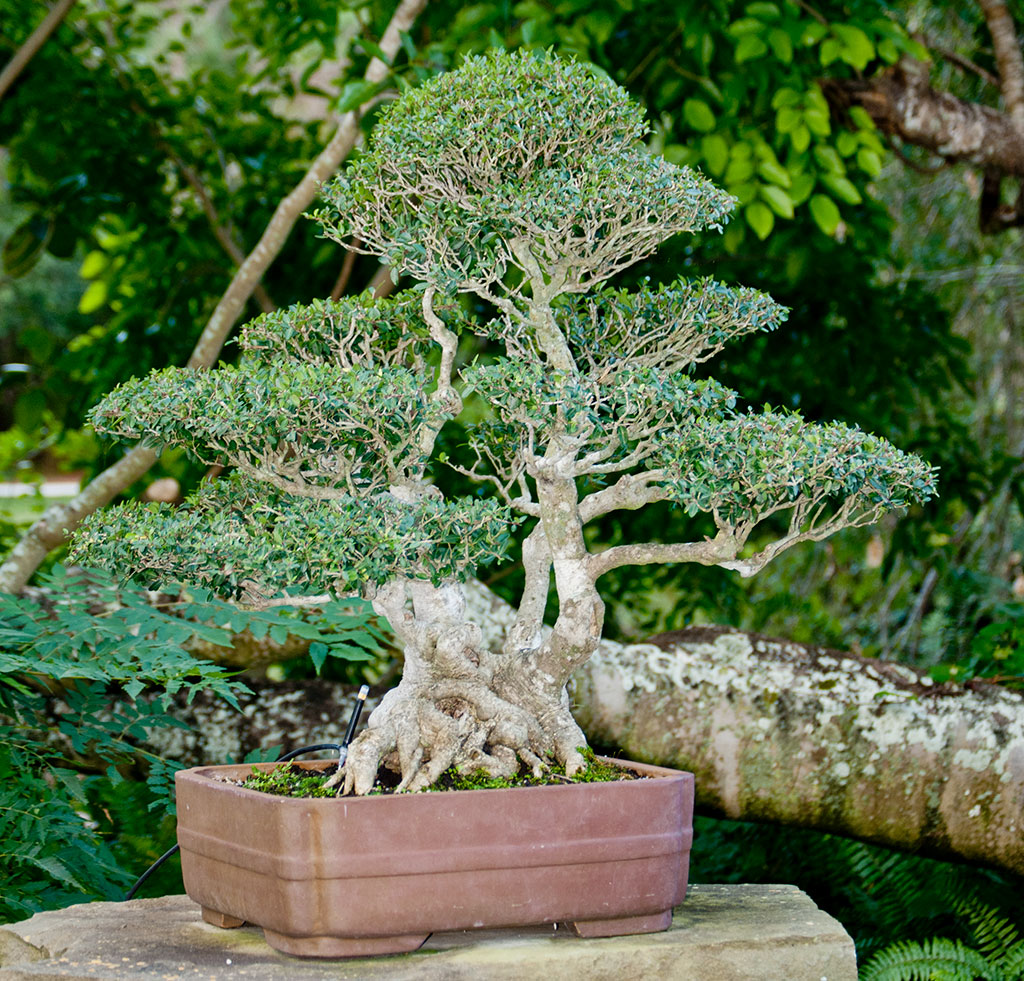This is a photo of a fig bonsai tree taken at the Morikami Japanese Garden in Delray Beach, FL. This area was once home to the Yamato Colony, a Japanese settlement in Florida during the early twentieth century.
The photo raises many questions that overlap science, social studies, and art. Here are just a few to get started:
- Why is the tree so small? Is it a special kind of tree or would it grow large in other conditions?
- What does a tree need to grow to its natural size?
- Why would someone want a miniature tree?
- What does the tree have to do with the principles of design we talk about when doing art projects?
- Why is there a Japanese garden in Florida? That’s a very long way from Japan.
- What are the connections between the experiences of the Yamato Colony and other historical events we study? (Growth of railroads, the economic crash in the 1920s, World War II)
Since this is the beginning of the school year for many of our newsletter readers, I got to thinking that a year-long bonsai project could be an interesting idea—especially for classrooms without access to an outside garden plot due to location or climate. Depending on available window space and lighting conditions, a single bonsai tree could be created, groups of students could plan and care for a tree, or every student could create and care for a tree during the year and have a very special present to take home at the end of the year for Mother’s or Father’s Day.
Each plant is a unique work of art. Your students’ first attempts at bonsai might not exactly rival centuries-old specimens cared for by master gardeners, but they’ll be just as special to them and will be a hands-on application of textbook learning across several subjects. The year-long responsibility for taking care of their tree is a valuable experience in itself and just might lead to a future hobby.
Care would have to be taken to select trees that would do well inside with the available light, but there are many online sources of information available regarding the selection of plants. You’ll also find a variety of sources on bonsai technique. Here’s a lesson plan and student worksheet from the Pacific Bonsai Museum that you can adapt for use with your students: Pre-Visit Lesson Plan.
Your students may also enjoy viewing these photos for ideas:

Bonsai Trees
This gallery contains ten photos of bonsai trees from the ClipPix ETC website.

Morikami Museum and Gardens
This gallery includes 150 additional photos of plants, animals, and the environment at Morikami Gardens in Delray Beach, Florida.
I’d love to see photos of your classroom bonsai projects! Email them to TIM@fcit.us.
Roy Winkelman is a 40+ year veteran teacher of students from every level kindergarten through graduate school. As the former Director of FCIT, he began the Center's focus on providing students with rich content collections from which to build their understanding. When not glued to his keyboard, Dr. Winkelman can usually be found puttering around his tomato garden in Pittsburgh. Questions about this post or suggestions for a future topic? Email me at winkelma@usf.edu. To ensure that your email is not blocked, please do not change the subject line. Thank you!
FCIT Newsletter
Each month FCIT publishes a newsletter with short articles on teaching and learning with technology, using digital content in the classroom, and technology integration. Subscribe today! The subscription form will open in a new window. When you have subscribed, you can close the new window to return to this page.

